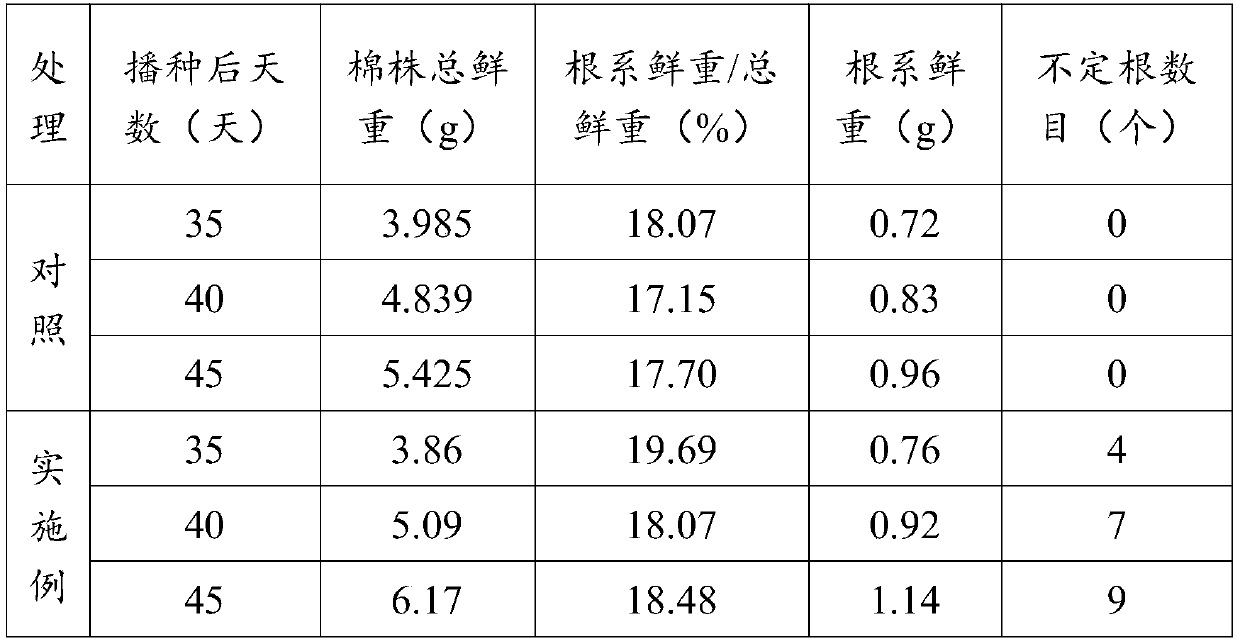Cotton indoor cultivation method and application thereof
A cultivation method and indoor cultivation technology, applied to the indoor cultivation method of cotton and its application fields, can solve the problems of weak absorption, weak regeneration ability, and limited effect, and achieve controllable conditions, precise and controllable growth status, observation and Accurate and convenient effect of sampling
- Summary
- Abstract
- Description
- Claims
- Application Information
AI Technical Summary
Problems solved by technology
Method used
Image
Examples
Embodiment 1
[0029] Cotton variety K638 was used as the test material in the solar greenhouse of Shandong Cotton Research Center. Select plump and substantial develvet photons, sow them in a black cylindrical plastic cup (diameter 10 cm, height 20 cm) filled with a seedling-raising substrate (Hoagland nutrient solution mixed with clean fine sand at a volume ratio of 1:7), the bottom and side of the container Small holes are uniformly left at 0-15cm, and the growth conditions are set as follows: day / night temperature (25 / 30°C), light cycle (12h / 12h), light intensity (400-450μmolm -2 the s -1 ), leaving 2 plants per cup after emergence.
[0030] During the growth period of cotton, water the nutrient solution once every three days, each time irrigate 0.5L per cup, and when the fourth true leaf of cotton unfolds, fill the black cylindrical plastic cup with fine sand moistened with the nutrient solution, and the filling height is 5cm , and then place it in a transparent square plastic box fil...
PUM
 Login to View More
Login to View More Abstract
Description
Claims
Application Information
 Login to View More
Login to View More - R&D
- Intellectual Property
- Life Sciences
- Materials
- Tech Scout
- Unparalleled Data Quality
- Higher Quality Content
- 60% Fewer Hallucinations
Browse by: Latest US Patents, China's latest patents, Technical Efficacy Thesaurus, Application Domain, Technology Topic, Popular Technical Reports.
© 2025 PatSnap. All rights reserved.Legal|Privacy policy|Modern Slavery Act Transparency Statement|Sitemap|About US| Contact US: help@patsnap.com


